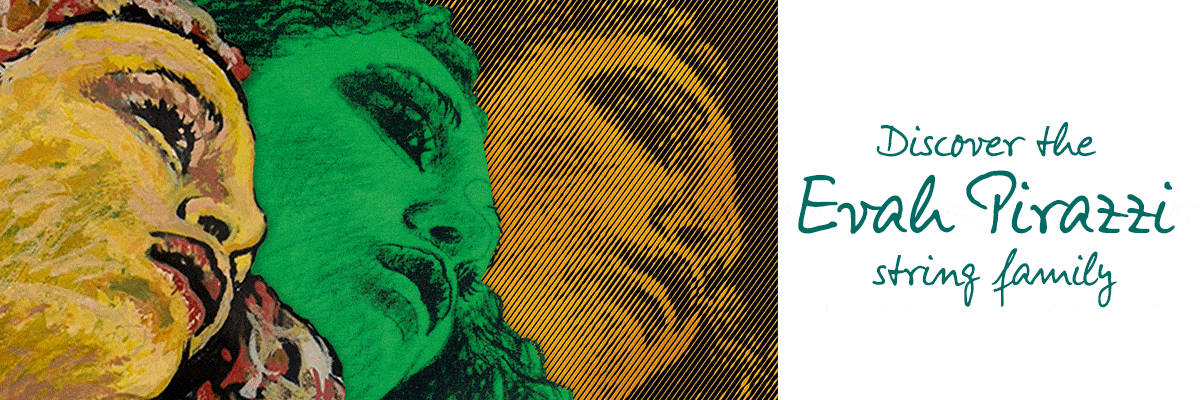How to teach Vibrato?
I find that I have trouble teaching vibrato. The way I learned it was just by observing my teacher. I just used my imagination. I learned vibrato a second time from a different teacher, and he taught me by telling me to shake my hand for five minutes a day towards and away from the body for two weeks before attempting vibrato for the first time. Explaining the action didn't seem to help my student understand how to do it.My student's vibrato is kind of tight, and they seem to be thinking a lot about how to do it. I am not sure exactly why they find it hard and don't quite know how to explain how to do vibrato.
Any advice on how to teach this technique?
Tweet
Replies (3)
Learning vibrato.
To start with, I teach a forearm movement, but with a flexible wrist and fingers: the elbow leads the wrist which leads the knuckles which lead the fingertips. Visually, the effect is rather like an underwater plant, waving to and fro in a gentle current. As the motion speeds up, the hand vibrates a little more than the forearm, but something is still happening in the elbow. The fingers stay slightly passive, but tonic enough not to slip.
My "underwater plant" motion is mainly to find that subtle synthesis of tonus and flexibilty. For a faster, maybe narrower vibrato, my "plant" get a little stiffer, but only just enough.
I have never practiced a "finger" vibrato as such, so I am still learning! But in the highest postions, when the whole hand is leaning over the violin's shoulder, my vibrato is more vertical than along-the-string; up there it has to be narrower anyway.
Depending on the student, the weather etc, I find I can choose between an "analytical approach", mastering individual elemets separately before combining them; and progressvely refining global movements in a "combo" (Gestalt?) approach.
I hasten to add that my wave-motions are done without the bow to begin with!
I have had a few students who have found a beautiful vibrato on their own: my approach tries to give the others this possibility.
I'll try to describe briefly what I do:
- Pressure Zero. One finger on each string; minimal or no contact between the base of the index and the neck; no pressure; a gentle back & forth shifting/sliding motion.
- Pressure No 1. Slight finger pressure with equally slight thumb counter-pressure; the strings descend halfway to the fingerboard. .
- Pressure No 2, a little more pressure; the strings arrive on the fingerboard, the fingertips drag more on the strings; as the forearm approaches, the hand leans back and the fingers curl; as the forearm recedes, the hand leans forewards and the fingers stretch.
- Pressure No 3, only just enough to stop the fingertips sliding; the complex motions of Pressure No 2 have become a combined arm & hand vibrato, with equal pressure from all 4 flexible fingers.
The only risk is increasing the finger pressure (and thumb counter-pressure) to Nos 4,5,6 etc without realising.
Excess tension, e.g. from the middle finger, or from the thumb, will block the wrist and stiffen the whole process.
It usually works!
Hope this is comprehensible...
PS
Concerning the "patting head & rubbing tummy" syndrome I have found that on long bowed note, the student's right arm wants to join in the vibrato when both elbows have a similar opening (usually mid-bow). This is normal: when we hold something in both hands, (e.g. a tray of drinks) they work in perfect sychronisation.
I try a de-sync exercise: a quick flapping motion in one hand, plus a long, slow arc in the other arm, so slow, that one can keep an eye on both sides at once.
Violinist.com is made possible by...
Dimitri Musafia, Master Maker of Violin and Viola Cases
Johnson String Instrument/Carriage House Violins
Subscribe
Laurie's Books
Discover the best of Violinist.com in these collections of editor Laurie Niles' exclusive interviews.

Violinist.com Interviews Volume 1, with introduction by Hilary Hahn

Violinist.com Interviews Volume 2, with introduction by Rachel Barton Pine








As an adult student, I’ve had to relearn everything related to posture (per Galamian) in order to avoid injury. I’ve had to work on my grip, my knuckle curvature, intentional relaxation, and so on. Once the posture is correct, I think the wrist vibrato technique really comes down to practice time. Progress can feel very slow. Fortunately, my teacher has excellent facility, so just watching him helps. Our lessons always involve a degree of observation.